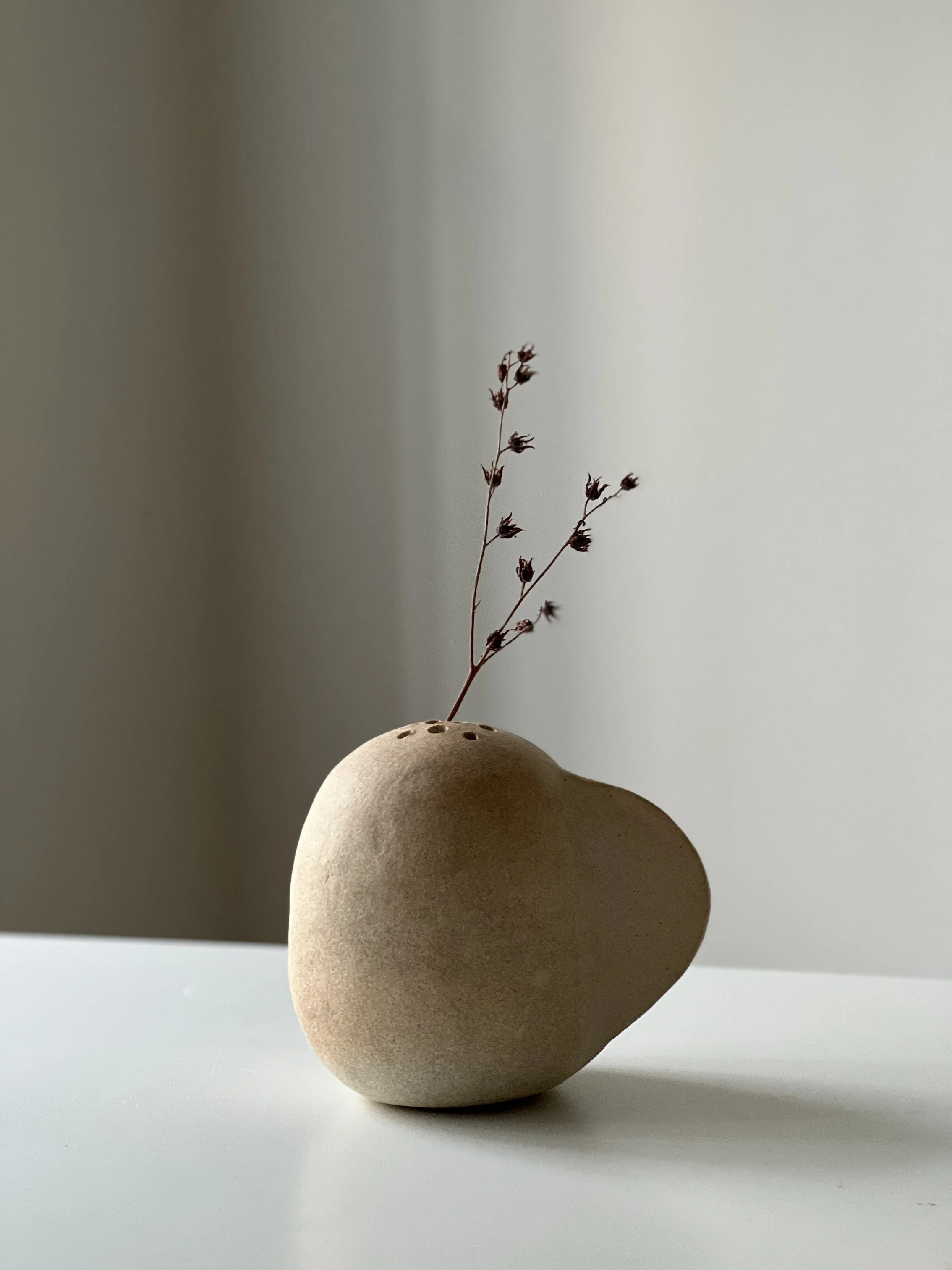The artistry of hand building
Introduction
In the realm of ceramics, the ancient technique of hand-building stands as a testament to the timeless connection between human hands and clay.
As a ceramic artist deeply immersed in the craft, I find immense joy in the meditative process of hand-building, which involves creating ceramic objects without the use of a pottery wheel. Instead, I rely on my hands, fingers, and a few simple tools.
This method establishes a more direct and tactile connection between the artist and the clay. I'm also drawn to the imperfect and natural aesthetics of ceramic vases and sculptures, achievable through hand-building.
This blog post aims to explain the many steps involved in this method, offering a glimpse into the world of hand-built pottery, creativity, and the tangible magic that emerges from the hands of an artist.
The Process
Every piece of hand-built ceramics begins with a lump of clay. The choice of clay is crucial, as its composition and texture play a significant role in the final outcome.
In my practice, I mostly work with stoneware and, for hand-building, specifically choose medium-coarse clay. It's easier to work with, especially for large or curved forms. Since the majority of my ceramics are unglazed, I appreciate the beautifully textured surface of the clay once the piece goes through its final firing.
Coiling technique
One of the oldest methods of hand-building, coiling involves rolling out long, snake-like strands of clay and layering them to form the desired shape. This technique allows for both organic and structured forms to emerge. The artist's hands guide the coils, shaping and smoothing them into a harmonious whole. The flexibility of coiling encourages the creation of vessels, sculptures, or even abstract forms.
I create most of my work using a coiling method. It allows me to make larger pieces, curves, and bulges. To give you a better understanding of the possibilities of coiling, here is an example of my most popular vase that I made with this technique - Sculptural Vase.
Pinching technique
In contrast to the rhythmic nature of coiling, pinching is a more spontaneous and immediate approach. Using only fingers and thumbs, the artist gently pinches and compresses the clay, coaxing it into shape.
This method invites a sense of intuition and responsiveness, allowing for the emergence of unique and sometimes asymmetrical forms.
Pinching is an intimate dance with the material, resulting in pieces that bear the unmistakable imprint of the artist's touch. I use this method to create bud vases and bowls, like this vase over here - Bud Vase.
Slab Building
For those seeking a more architectural or angular aesthetic, slab building offers a structured alternative. Thin, flat sheets of clay are rolled out and cut into various shapes, which are then assembled to construct the desired form.
This method provides ample room for experimentation with texture, pattern, and surface design. The careful layering of slabs requires precision and planning, turning the creation of each piece into a thoughtful and deliberate process.
I rarely use this technique and have yet to explore its full potential, but this large vessel I made using slabs came out beautiful! Here is a link to see it - Multicolor Ceramic Vessel.
Drying and Bisque Firing
Once the hand-built piece has taken shape, it enters a crucial phase of transformation. The object must be allowed to dry slowly and evenly to prevent cracking. After thorough drying, the work undergoes its first firing – the bisque firing. This process hardens the clay, making it more durable and ready for glazing.
Glazing and Final Firing
The glazing stage is where the artist's vision comes to life in color and texture. Whether using vibrant hues, earthy tones, or subtle variations in surface treatment, the choice of glaze adds a layer of complexity to the final piece.
There is always an option to keep the surface unglazed to reveal the natural color and texture of the bare clay. I keep a lot of my ceramics unglazed on the outside and, therefore, prefer lighter nude colors of stoneware or a nice toasty golden hue. The inside is glazed to create a food-safe and waterproof surface.
Once glazed, the artwork undergoes a final firing, merging the clay and glaze into a unified, finished form.
Conclusion
Hand-building in ceramics is more than a technique, it's a journey that fuses creativity, skill, and a deep connection to the medium. As a ceramic artist, each piece I hand-build carries a story, an imprint of my hands, and a dialogue with the clay. Through coiling, pinching, and slab building, I explore the infinite possibilities of form, texture, and expression. The ancient art of hand-building continues to thrive, connecting contemporary artists to a timeless tradition of shaping raw material into vessels of artistry and meaning.
If you would like to continue learning about handmade ceramics that follow traditional techniques and methods, I highly recommend reading the blog post - “Insight into the practice of creating ceramic artwork“. This article goes into the details of ceramics making as well as my personal experiences with it.



